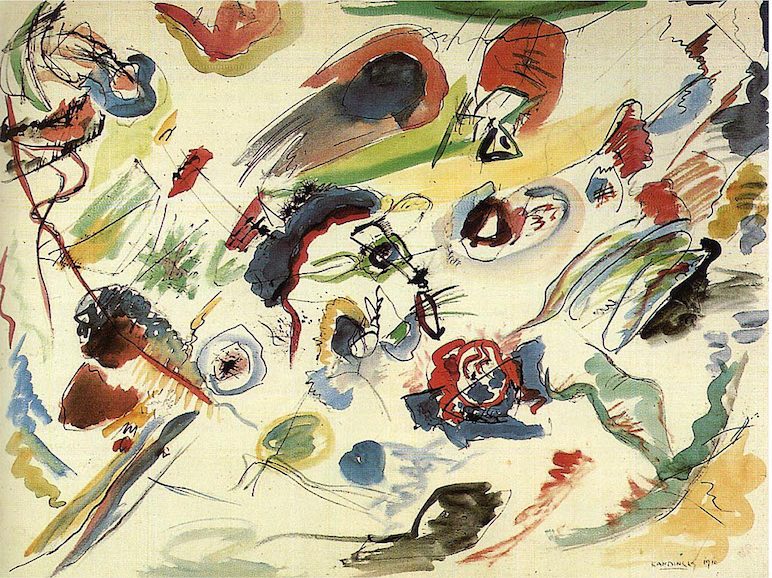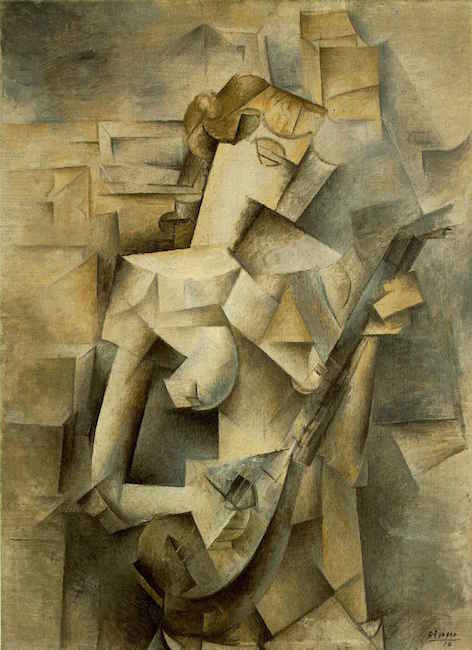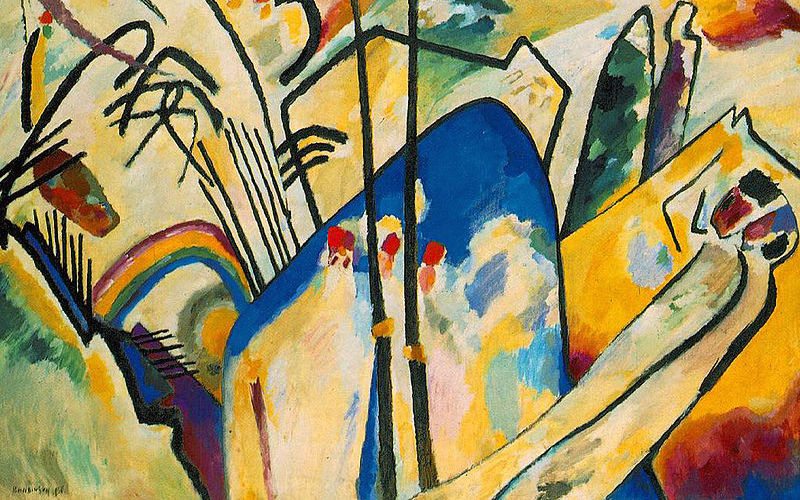Modern Art
Episode #9 of the course “Art Movements Throughout European History”
Modern art is a general term that describes several movements of art in the late 19th and early 20th centuries. Modern art includes Impressionism, Post-Impressionism, Cubism, Expressionism, and Abstract art. Although the school of Surrealism can also be included as a type of modern art, the Surrealists themselves did not consider their artistic style to be limited to any historical age. There is no distinct time period that sets “modern art” apart from other art movements in general, and some people refer to modern art as ranging as far as 1880 to the end of the 1960s.
 First abstract watercolor, Wassily Kandinsky
First abstract watercolor, Wassily Kandinsky
In modern art, painters and sculptors throughout Europe attempted to portray three-dimensional visuals in two-dimensional space—experimenting with portraying light, depth, perspective, and shape on flat surfaces. They were highly influenced by the theories of Sigmund Freud about dream interpretation and the workings of human psychology. Modern art also attempts to engage with social and political topics, concerned with humanity rather than eternity.
 Girl with a Mandolin, Pablo Picasso
Girl with a Mandolin, Pablo Picasso
 Le bonheur de vivre, Henri Matisse
Le bonheur de vivre, Henri Matisse
In addition to Claude Monet and Vincent van Gogh as major influencers in the beginning of the 20th century, Pablo Picasso and other artists in the Paris salons began to develop a style of flat perspective that broke reality down to its basic shapes and bright colors, which came to be known as Cubism. German-based Expressionism attempted to express the feelings of the modern individual, embodied by Edvard Munch’s The Scream.
 The Scream, Edvard Munch
The Scream, Edvard Munch
Religious themes were less revisited, and modern artists incorporated both new techniques and new materials to create their art as symbols of the modern age. The use of color in Abstract art became more symbolic to express a range of feelings and personal statements; its extreme was met with Kazimir Malevich’s Black Square.
 Black Square, Kazimir Malevich
Black Square, Kazimir Malevich
Share with friends

